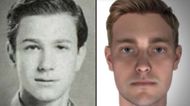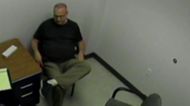48 Hours, another true crime series, dedicated one of its episodes, Closing the Cold Case of Robin Lawrence, to the astonishing case of Robin Warr Lawrence's murder in Virginia, right in her house with her 2-year-old daughter present.
The crime was heinous as she was stabbed 49 times until she died. It happened in November 1994. Robin's friend, Laurie Lindberg, recalled entering the house and seeing the pool of blood in the bedroom, with her daughter roaming around, confused.
She immediately called 911 and took her daughter, Nicole, to the hospital for a checkup. The investigation spread out, probing through Robin's social media and connected relatives. The detectives collected some unknown DNA samples from the crime scene, but they didn't match anyone in their database. This is when it seemed like the case was unsolvable, and after decades, it almost got cold. But soon, via a DNA technology called genetic genealogy, they found out the culprit.
Read on to know full details of the Robin Lawrence murder case as shown in 48 Hours.
Here is how genetic genealogy helped to catch Robin Warr Lawrence's killer, as explored in 48 Hours

When Ollie Lawrence couldn’t reach his wife, Robin Warr Lawrence, he asked a family friend to check on her. As mentioned, it was Laurie Lindberg who saw the crime scene first and rescued baby Nicole, calling 911 immediately. The investigators who then arrived at the crime scene, discovering Lawrence to be stabbed dozens of times, said in an interview with 48 Hours,
“This was not a robbery gone wrong. This was something else - something personal or deeply disturbed,”
But as they probe into the case, they realized it is reaching nowhere and hitting a dead end one after another. They processed the crime scene, taking the fingerprints, DNA, blood samples everything. Afterwards, a forensic scientist developed a genetic profile and tried matching it with the generic database. However, no DNA match was found. Detectives couldn't determine the time of the attack, and the lack of connection between the victim and the suspect was another obstacle, making the case stagnant.
In 2019, Deputy Chief Eli Cory and his team re-examined the evidence and sent the preserved DNA sample to Parabon NanoLabs, a Virginia-based company specializing in genetic genealogy.
“Years later, that DNA technology would improve and get better,” said Deputy Chief Cory. “And in 2019, not giving up, our cold case detectives resubmitted that DNA to a company called Parabon.”
This technology also detects the DNA of relatives that match even partially to the DNA submitted. Parabon then created a digital facial composite of the suspect and also built a family tree with the DNA in the database. Via this tree, investigators could trace some suspects based on their age and geography.
This meticulous tracing via genetics eventually pointed investigators towards Stephen Smerk, who was living in Niskayuna, New York, at the time. The man had no criminal record, and even the investigators found no connection between him and Robin.

However, the detectives decided to reach out to him and catch hold of him when he was out throwing his trash. He easily agreed to provide a swab for DNA testing. That day in evening, he called the local police station and confessed to his crime of killing Robin Lawrence. What he confessed was shocking, as Robin's killing was random and a result of an uncontrollable urge to kill anyone.
“I knew I was going to kill somebody… I didn’t know who.” Smerk confessed. "I honestly believe that if it wasn't for my wife and my kids, I probably would be a serial killer," Smerk said.
According to prosecutors, with the help of this new genetic genealogy technology, Robin Lawrence got justice, and a serial killer was convicted after decades of committing a gruesome crime, as explored in 48 Hours.
